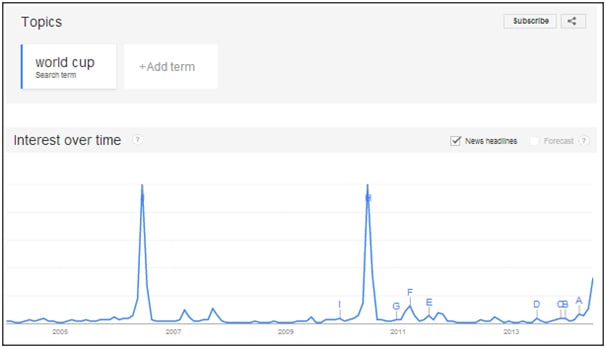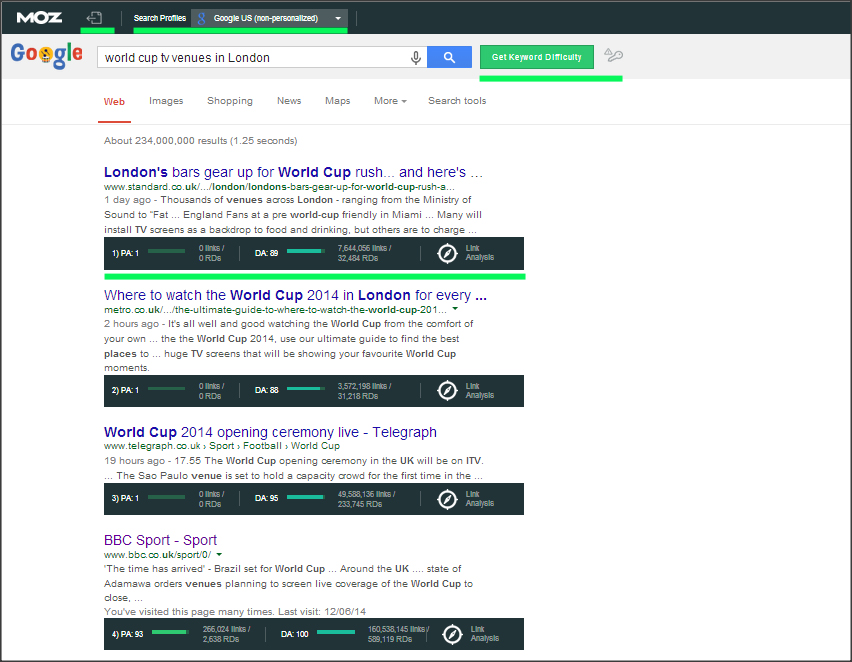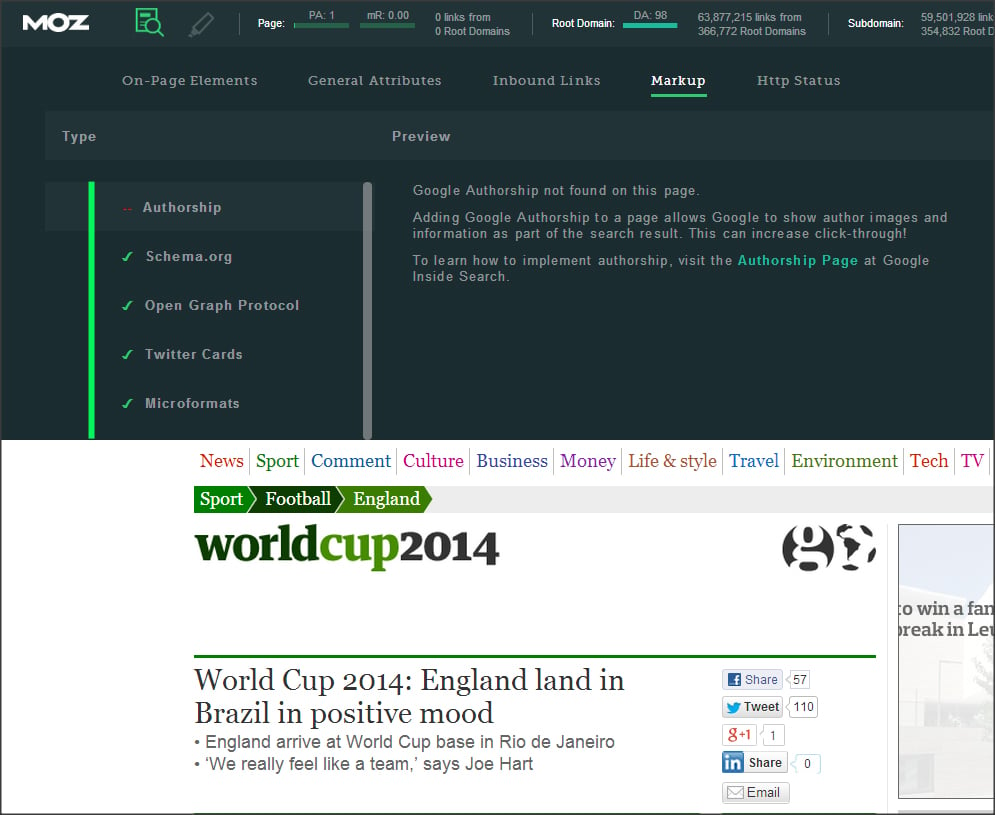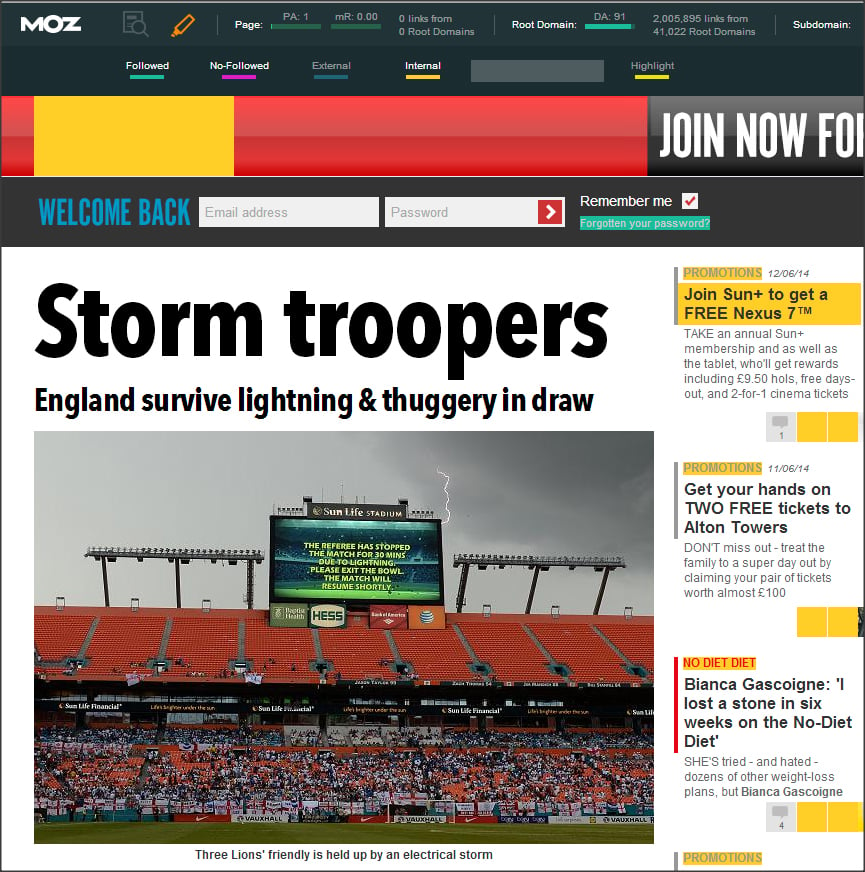MOZ bar reinvention overshadows 2014 World Cup
I have shamelessly used World Cup related screen shots to demonstrate the new MOZ bars capabilities, but also to pre-empting the inevitable surge in World Cup related search queries.
For the past 8 years SEO’s have been in a love-hate relationship with the MOZ bar – will it load, won’t it load and will it load faster if I login? Ahh I’ll just run it via Open Site Explorer instead.
When it did load it provided us with some pretty useful features, particularly in an SEO’s approach to outreach via competitor research, link analysis and SERPs analysis.
So what’s new: [2008 vs. 2014]
1. Design
The redesign is far more distinctive and according to MOZ has been “optimized around the tasks and use cases it is designed to solve”. The most obvious difference is the speed, while my only criticism would be the usability of websites that have navigation at the top of the page – the MOZ bar often covers this making the site hard to navigate.
2.Profiles for locations & search engines
The first and most noticeable addition is the ability to switch between search engine & geographical locations – for those SEO’s working on multinational location based clients this means you can easily switch location without change your search query.
3. Export SERP’s results to CSV
Sitting alongside the MOZ logo is a new export function – this enables the quick viewing of URLs, page titles, meta descriptions & link metrics. For SERP data en mass would still choose Screaming Frog or functions within AWR, but for quick data this is a welcome feature.
4. Keyword difficulty data
This tells us the competition around a particular keyword term, this is good for topline research, but I still continue to use the Google’s keyword planner.
5. PA & DA metrics pulled into SERPs
This feature is possibly the most useful addition as it gives you a top line gauge of a sites ‘authority’ without needing to visit the site, click on the MOZ icon, wait for it to load, refresh the page, click the MOZ icon (again).
I’ve found this especially useful in outreach, where the enhanced root & subdomain improvements mean you can spend less time looking for sites, analysing links profiles and ultimately be more time efficient.
Tip: Clicking on the root and subdomain stats take your directly into Open Site Explorer, so you can remove those bookmarklets in your toolbar.
6. New Page Insights > Preview semantic mark-up
Are you marking up your website with the appropriate Schema, authorship, Twitter cards or Open Graph?
Maybe you are carrying out an audit on a client’s site or assessing competitor’s site – the new MOZ bar enables SEO’s to quickly check if a site has semantic markup. I’ve used this Guardian screenshot to exhibit this and well as the positive mood within the England camp.
7. Highlight followed, nofollowed, external & internal links
Light up your web browser like a bird of paradise & spot link properties (internal & external) without resorting to rummaging through source code
When would I use this? If you are thinking about contacting a site which has few external links & those that are carry nofollowed – then maybe this isn’t the right site when your client is expecting external ‘followed’ links.






